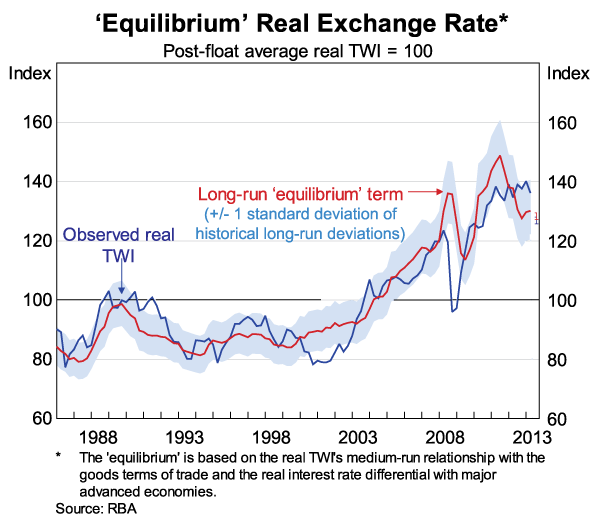The case for currency intervention
Last night Reserve Bank of Australia governor Glenn Stevens declared currency intervention to be a part of the bank’s “tool kit” but said the board was not yet convinced large-scale intervention passed the test of effectiveness versus cost.
In a wide-ranging speech covering the 30-year period since Australia moved to a floating exchange rate regime, Stevens escalated the Reserve Bank’s attempts to talk down the high Australian dollar. Following the speech, the dollar tumbled through its support level against the US dollar to be a little above 92 cents.
Stevens began his one-man battle against the exchange rate during a speech at a Citi Investment Conference on 29 October. Since then, the Australian dollar has depreciated by around 4 per cent against the US dollar, and by more than 2 per cent against a trade-weighted index of foreign currencies. Last night represented a welcome escalation of the bank’s rhetoric, which I was concerned risked the prospect of diminishing returns (Diminishing returns for the Reserve?, November 19).
The Australian dollar is down around 11 per cent against the US dollar since the end of April but remains well above the level necessary to facilitate a smooth transition from relying on the mining sector towards the non-mining economy. In a recent report, the International Monetary Fund said that the Australian dollar was overvalued by around 10 per cent – which points to an implied level of around 85 US cents.
The outlook for the Australian dollar is intrinsically tied to the “extraordinary monetary policy measures that are being undertaken in the major economies of the United States, Japan and the eurozone”. Unless the likes of the Federal Reserve begin tapering their massive asset purchasing programs, the Australian dollar will remain at an elevated level. The longer the Fed delays tapering the more likely the RBA is to intervene in markets and I suspect uncertainty surrounding the taper is probably delaying any central bank intervention. The Reserve Bank is hoping that jawboning currency markets will be enough in the near term to keep the dollar down until the taper begins.
Another complicating factor is the high terms of trade, which historically has been a key driver of the exchange rate, as the graph below shows. The long-run equilibrium exchange rate in the graph is a function of the long-run dynamics between the exchange rate, the terms of trade and the interest rate differential (though the terms of trade is the major driver). The model suggests that based on the current level of the terms of trade that the Australian dollar is not hugely overvalued.

The main concern for the Reserve Bank right now is the cost versus benefits of direct intervention. On one hand, if the dollar is overvalued then intervention will be beneficial given the central bank will be selling Australian dollars high, while buying foreign currencies low. On the other hand, there are costs involved.
“Intervening against the Australian dollar would have involved selling Australian assets yielding say 3 per cent, and buying foreign assets yielding much less – in fact, earning almost nothing over recent years,” Stevens said. “This ‘negative carry’ would be a cost to the bank’s earnings and therefore Commonwealth revenue.”
So these two factors compete to determine whether an intervention is profitable or not. The greater the overvaluation the greater the profits that the Reserve Bank will reap. But it is also important to recognise the additional benefits of policy intervention: higher GDP growth. Because that is what this is all about. We want a lower exchange rate to improve competitiveness and boost growth. The RBA bottom line is important and shouldn’t be disregarded but it is not as important as the economic wellbeing of the country.
The Reserve Bank’s effort to jawbone currency markets has been successful thus far, but there are limits. Words will not be enough to lower the dollar to 85 or 80 US cents. The unwillingness to intervene so far indicates that the central bank is either not convinced that the dollar is overvalued enough to warrant the investment or believes that the Fed will begin tapering soon enough that intervention is not necessary.
The former is not true, given the Reserve Bank’s profitability is largely determined by foreign exchange movements, not to mention the broader economic benefits. So the RBA may be relying on other central banks to do the right thing. But perhaps it is time it put its money where its mouth is and took back control of its own future. It is time to provide a little relief for Australia’s struggling industries.
















